Planting a vineyard? Not so fast.
Careful planning of a vineyard is essential to its success. Don’t take shortcuts.
By Mark Greenspan
The following is reprinted from the June 2018 issue of Wine Business Monthly
As a vineyard consultant and vineyard management service provider, I can’t tell you how many people come to us and want us to plant a vineyard immediately. I do understand that once a property is in possession, a new owner is eager to see the revenues flow as soon as possible from their investment. However, I find it challenging to talk them off of the starting line and let them know that planting a vineyard requires a series of steps lest they end up with a vineyard that is uneven, lacking vigor or possessing excess vigor, with chronic nutrient imbalance or most likely failing after a short period of time because of diseased vines. Developing a vineyard is a process, much like building a house or a building, only with a vineyard we are dealing with weather, soils, physics and biology and working to integrate all those factors. Facets of vineyard development are more than can be discussed in this column, but I’ll touch on the most important. If you want to delve deeper, well then, you are best off contacting someone like me to work with you on your specific project.
Climate and meso/microclimate
This is the major driver of determining what variety mix should be planted at a given site. One can trivialize this by simply looking around the neighborhood and seeing what others have planted. Honestly, in most cases that is sufficient. Russian River Valley? Plant Pinot Noir and Chardonnay. Napa Valley? Plant Cabernet Sauvignon. But, as people buy land in lesser-explored areas, such as the Sonoma Coast, Lake County, or hillsides everywhere, the best varietal choices are less obvious. Sneaking varieties into zones that are on the cool fringe can bring out the best wines, but that is risky, but less risky if you’ve done your homework. That’s why it is always best to do some weather monitoring at the target site before embarking on a vineyard plan. Usually, there is little information available, so at best we place some temperature loggers on a site and compare those data to nearby sites for comparison.
There are plenty of considerations regarding weather and climate, but first what is the difference between weather and climate? As Mark Twain once said, “Climate is what we expect, weather is what we get”. Climate is a long-term representation of what the weather characteristics are of a location or region. Weather is just what is happening at any given moment or over any given period of time. Long-term measurements of weather can help guide us to what the climate is for a location, but we cannot determine climate from only a brief period of weather measurements. However, we have some tricks we can use to correlate our site weather measurements to longer-term weather records and come up with reasonable estimates of climate.
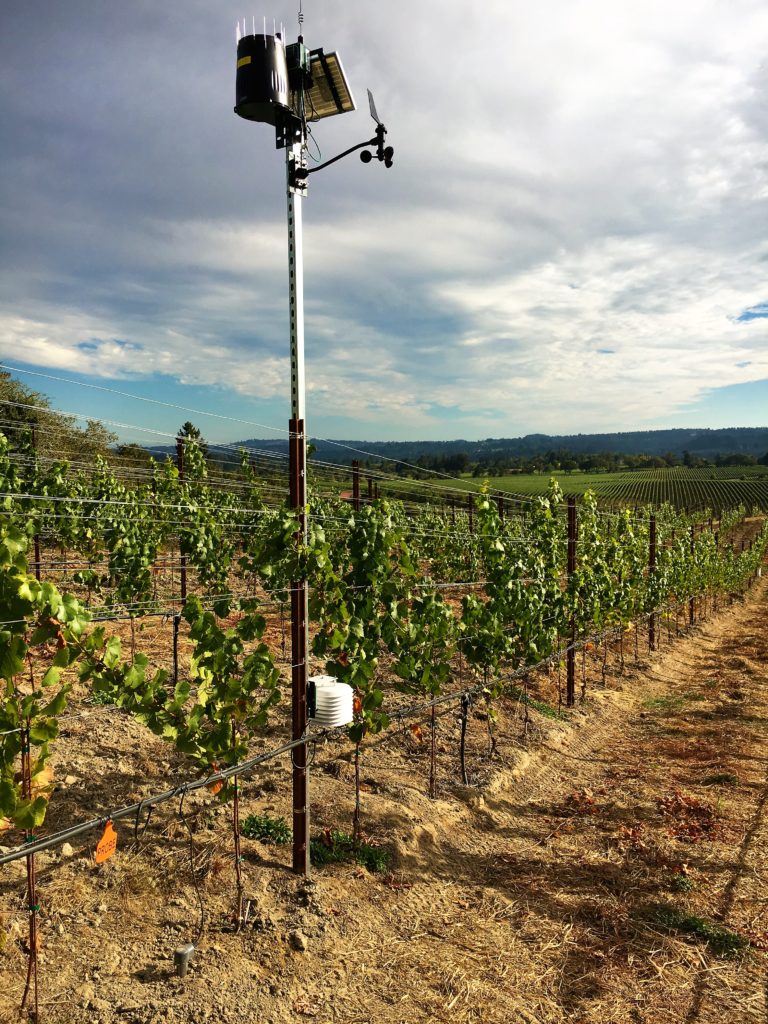
Besides regional climate, there can be variations within a property, especially those that are hilly. Slopes and aspects, hills and valleys will all have different weather conditions, especially with regard to temperature and possibly also wind. This small-scale climatic variation is referred to as mesoclimate or microclimate. The latter is sometimes used to refer to the climate within a plant canopy, but it also often refers to variations within a small spatial area. Regardless of what word is used, one should be cognizant of the small-scale variations of climate and plant the vineyard accordingly. As the temperature cycles of a hillside usually favor color and phenolic development of red varieties, we usually plant reds on a slope, especially on south or southwest-facing slopes, while white varieties are often relegated to valleys and north-facing slopes.
While regional rainfall patterns can usually be a good approximation of specific site conditions, temperature patterns can vary widely within the smaller-scales of a region or within a property. So, it is usually wise to do some temperature monitoring. Ideally, one will install a temperature logger or weather station on-site well in advance of planting, but that is not often practical. Remember, I mentioned that property owners who want to plant a vineyard want to plant it now, not a few years henceforth.
But, even some is better than none and placing some temperature loggers at key locations can be very useful: different slopes and aspects as well as hills versus valleys can reveal tremendous contrasts. The most obvious use of temperature data is to compute heat summation, presented in units of growing degree days above a baseline temperature (usually 50°F). Computed during the standard period between April 1 and October 31st, this provides a good indication of what can be grown at a location. Usually, higher quality wines are produced at the lower end of the desirable range for a given variety. Sites that have typically early budbreak may want to start their computations earlier than April 1st. On the other hand, sites that have severe weather starting in October may want to truncate the computations earlier than the end of that month.
That said, we can also get valuable feedback by looking at the diurnal temperature patterns at a site – I like to look at averages over months, or specific periods, such as a typical ripening window. Of key importance is the daytime versus nighttime temperatures. The old adage of “warm days and cool nights” being best are kind of true, but its really not that simple. Warm days do help grapes ripen, and cool nights reduce acid metabolism during the night, and that works out well – but primarily for white varieties. Warmer nights, above 50°F, allow the berry metabolism to continue during the dark hours, which helps fruit to develop flavors and mouthfeel during hours when sugar production is taking a snooze. As a result, sites with warmer (but not too warm) nights and warm (but moderate) days can present an ideal situation where the fruit ripens flavor-wise without the sugar levels rising to excessive levels. At sites (usually hillsides or sites at higher elevations), it is often possible to ripen varieties at the coolest edge of the typical growing degree day window, and sometimes even below that cool threshold.
Besides helping determine the best varietal mix for a site, there could be some useful guidance for rootstocks here also, though soils information is more influential for rootstock decisions than climate. Regardless, earlier-season rootstocks, such as 101-14, could be looked at for climates that tend to have warmer spring weather with an abrupt cool fall season. On the other hand, late-maturing rootstocks, such as 1103P, can be matched to a climate that tends to allow for later ripening. Care must be taken to avoid rootstocks that are not only incompatible with the soil, but also the climate.
Soil
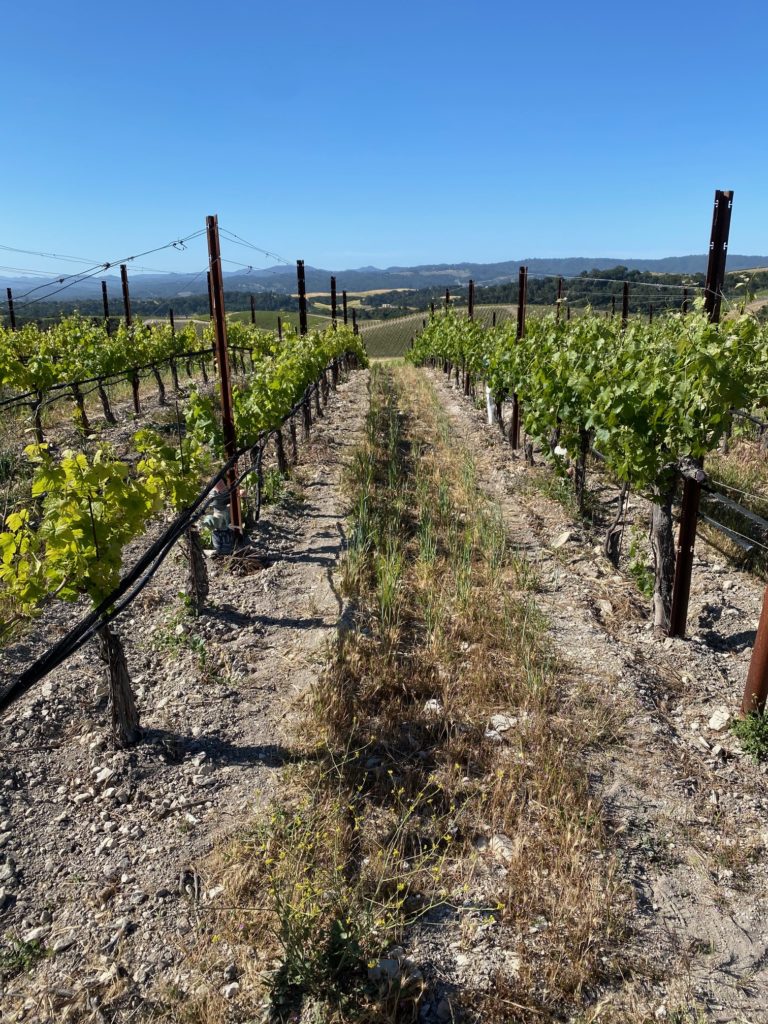
Where do I start? Well, let me start by saying that one should never use the NRCS soil maps as a basis for their planting decisions. They can be a good starting place. Those of us who have dug pits in many sites know that they are reflective of the soils in the area. They can also vary tremendously from the actual soil characteristics, especially with respect to the boundaries delineating them, which were determined many decades ago using aerial imagery primarily.
There are many ways to assess soil: Soil auger cores, backhoe pit observations and sampling, as well as several spatial mapping technologies. The spatial maps produced by some of these technologies will produce detailed maps of the major soil types and their boundaries, which is incredibly useful for vineyard planning. It is probably never advisable to use these technologies solely without any accompanying soil pits, or at least without observations of soil cores. Only a human with a soil science background can truly make assessments of soil structure, stratification, and visual cues about waterlogging. I find it useful to do some spatial soil mapping and use those spatial maps as a guide for determining where to do some visual samples.
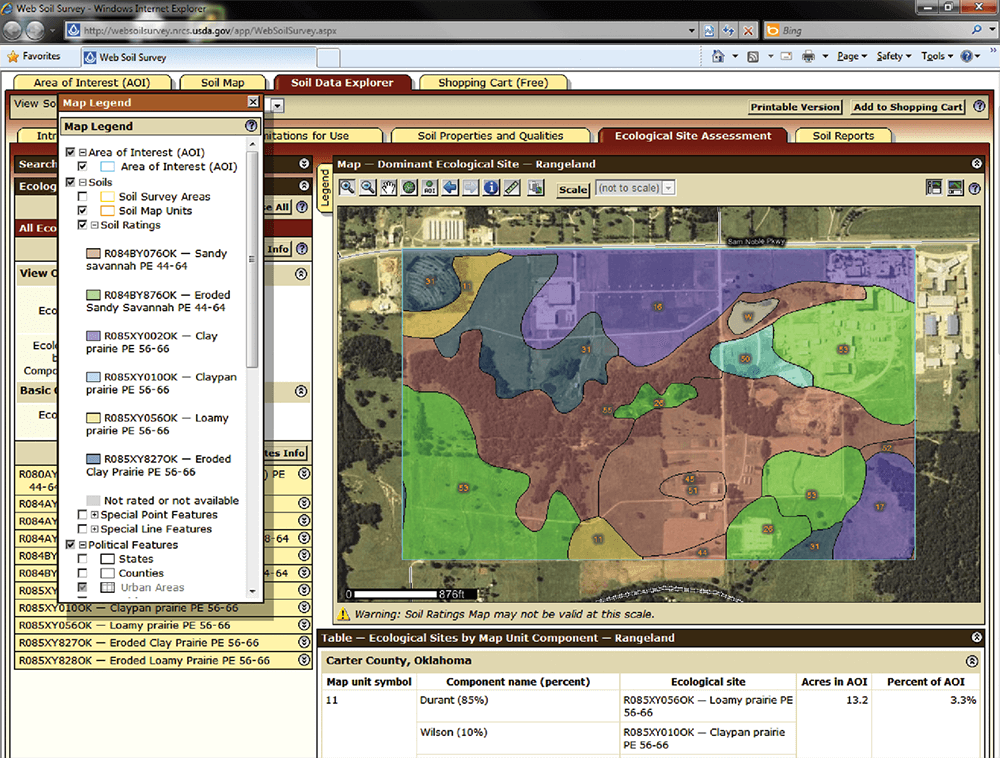
Furthermore, the spatial maps rarely, if ever, provide nematode information, so the field sampling follow-up should always include soil testing for parasitic nematodes. I’ve been finding that nematodes are present in nearly every replant situation I’ve investigated. Knowledge about nematodes present in soils is essential information as the only true, long-lasting way to work with nematodes is through use of nematode-resistant rootstocks. One must also know which nematode species are present. The most common classes of nematodes include root-knot, dagger, and ring nematode. Know which ones you have and what rootstocks have the highest resistance to them. Nematodes will severely restrict your choices in the greater pool of rootstocks.
The major classes of soil characteristics of interest include physical components, water-holding capacity, and chemical composition. By physical, we are interested in soil texture (sand, silt and clay fractions), soil structure (how the soil holds together to form secondary units), stratification of soils, hardpans, claypans and other limitations to root penetration and survival. We cannot simply take soil that has poor structure or heavy clays and make them into friable soil that roots will thrive in. On the other hand, very friable and deep soils may provide a habitat for lush root systems that are too good for our purposes – wine grapes are not supposed to be excessively vigorous. But, this information is critical in determining how deeply we should rip prior to planting as well as what rootstocks are suitable to our particular profile.
Water-holding capacity may be estimated from soil textural profiles, but rock content and structure will also enter into its determination. Most commonly, water holding capacity is expressed as plant available water (PAW), which is the difference between water content at field capacity and at permanent wilting point. We never want our vines to get close to permanent wilting, but this is nonetheless a standard way to represent water holding capacity. Very low (say, under 3 inches within the root zone) of PAW can be good for fine wines, but in California it will mean that irrigation is necessary. If there is over 6 inches of PAW in the root zone, this can lead to excessive vigor and is likely to produce a vineyard with poor wine quality. There are ways to deal with this, including proper rootstock selection, wider vine spacing and dry-farming, but it must be known up front. When irrigation is available, PAW in the root zone should be about 4-5 inches, ideally.
We can estimate PAW with depth, and since we may have some control over the rooting depth by selecting a specific ripping depth, we can precisely predetermine our PAW in our rooting zone in this manner. Ideally, we choose a ripping depth that creates an ideal PAW in the profile while also producing uniformity in the PAW. This helps to provide a more uniform growth behavior in the vineyard. Note that soils that are innately deep and friable may not be able to be controlled by precision ripping, as roots may proliferate more deeply than the ripping depth. This assessment is best made by viewing soil profiles in backhoe pits.
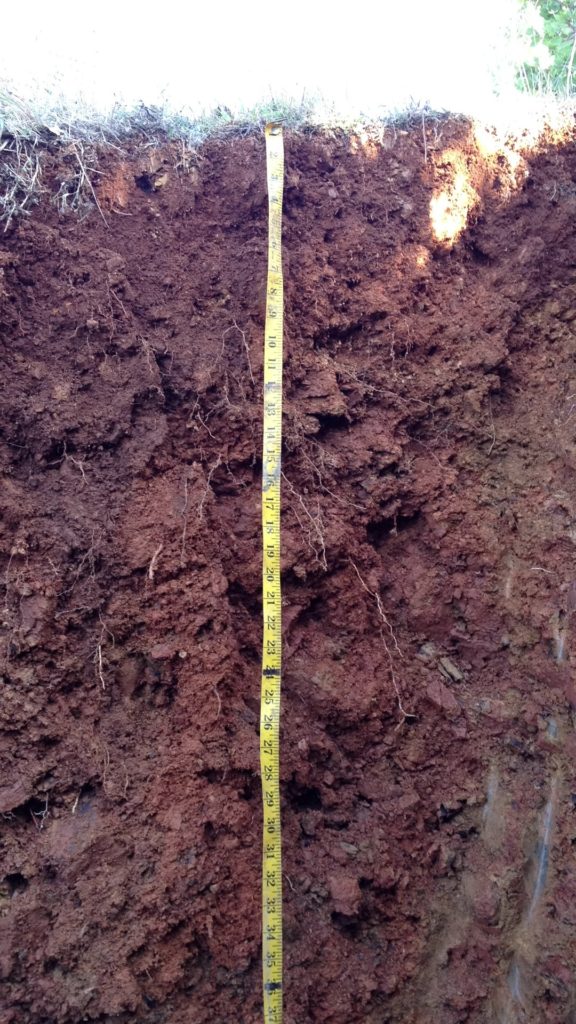

Other soil factors include organic matter and pH. Organic matter is important as it feeds the local microbe population, themselves an essential component of nutrient cycling in any soil. Low organic matter may be mitigated by applying compost, but cultivation of cover crops over the long-term, in combination with minimal tillage is probably the most effective means to increase soil organic matter. Soil pH is extremely important, and it is generally thought that between 6.2 and 6.8 is the ideal range of soil pH. Above that, the availability of some nutrients declines, most notably phosphorus, zinc and iron. High pH soils are most commonly found in arid climates and are prevalent in California’s central coast. Nutrient issues aside, some of the best wines in the world come from high pH soils, so it is not such a bad thing. But, vineyards on high pH soils should be planted at high density because of vigor suppression (though other factors play into this) and it will take some management to allow for minimally-tolerable levels of some nutrients. Foliar nutrient applications of micronutrients (especially zinc and iron) will help alleviate some of the problems, and some localized soil acidification using dusting sulfur as a soil amendment in concentrated amounts (usually under drip emitters) will help to mobilize some phosphorus. It is not practical to reduce bulk soil pH to any great extent.
On the opposite side of the spectrum, low soil pH can be very detrimental, and low pH is common in high rainfall areas such as California’s north coast, where the basic cations have been leached from the soil cation exchange leaving a high concentration of hydrogen ions. Low soil pH can cause problems also with nutrient availability and extremely low pH (5.2 and below) can create a situation where excessive amounts of aluminum are solubilized. Aluminum is highly toxic to grapevine roots. The common solution to low soil pH is to apply agricultural lime (calcium carbonate) or dolomitic lime (calcium and magnesium carbonates). Lime is often needed as a pre-plant soil amendment in amounts ranging from one or two tons per acre to over ten tons per acre. However, we rarely apply quantities over 10 tons per acre at any one time, choosing to apply it and re-apply it some years later as a follow-up. Lime is, in all practicality, nearly insoluble, so its effect will be only where the material is placed. So, we usually apply it to the surface before we rip the soil, helping to incorporate it as much as possible during the soil preparation process.
Gypsum (calcium sulfate) can also work well as a soil amendment, though it does not change soil pH. It is usually used to balance out other cationic nutrients in the soil and to attain a desirable ratio of nutrients on a soil’s cation exchange. Many coastal California soils are elevated in magnesium and applying gypsum is a good way to balance the soil chemistry. While not changing soil pH, it can help to tie up aluminum in very low pH soils, reducing its toxicity. And the benefit of gypsum is that it is much more soluble than lime (though still of limited solubility), thus can provide benefit far deeper into the profile than can lime. Most often, we apply both materials to a vineyard soil prior to planting. But like most things, too much is not always a good thing. These quantities can be computed by someone who knows what they are doing.
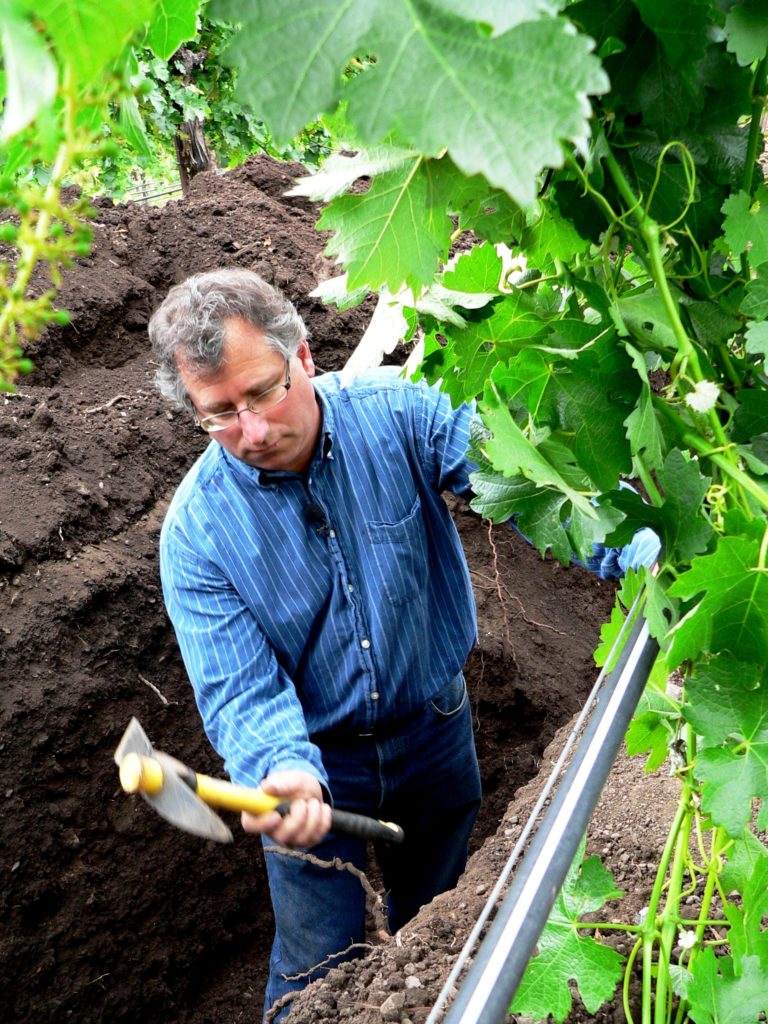
I haven’t even gotten into soil chemistry, rootstocks and plant health and I’m hitting the limit on how much I can write, so stay tuned and I will write on those other aspects of soils and vineyard planning at a later date. At this time, I hope to impress upon you the need for soil and climate evaluations before you get ready to plant that vineyard. If you fail to hire a qualified consultant before embarking on a vineyard development, your vineyard failures will certainly exceed the initial investment you should have made.


